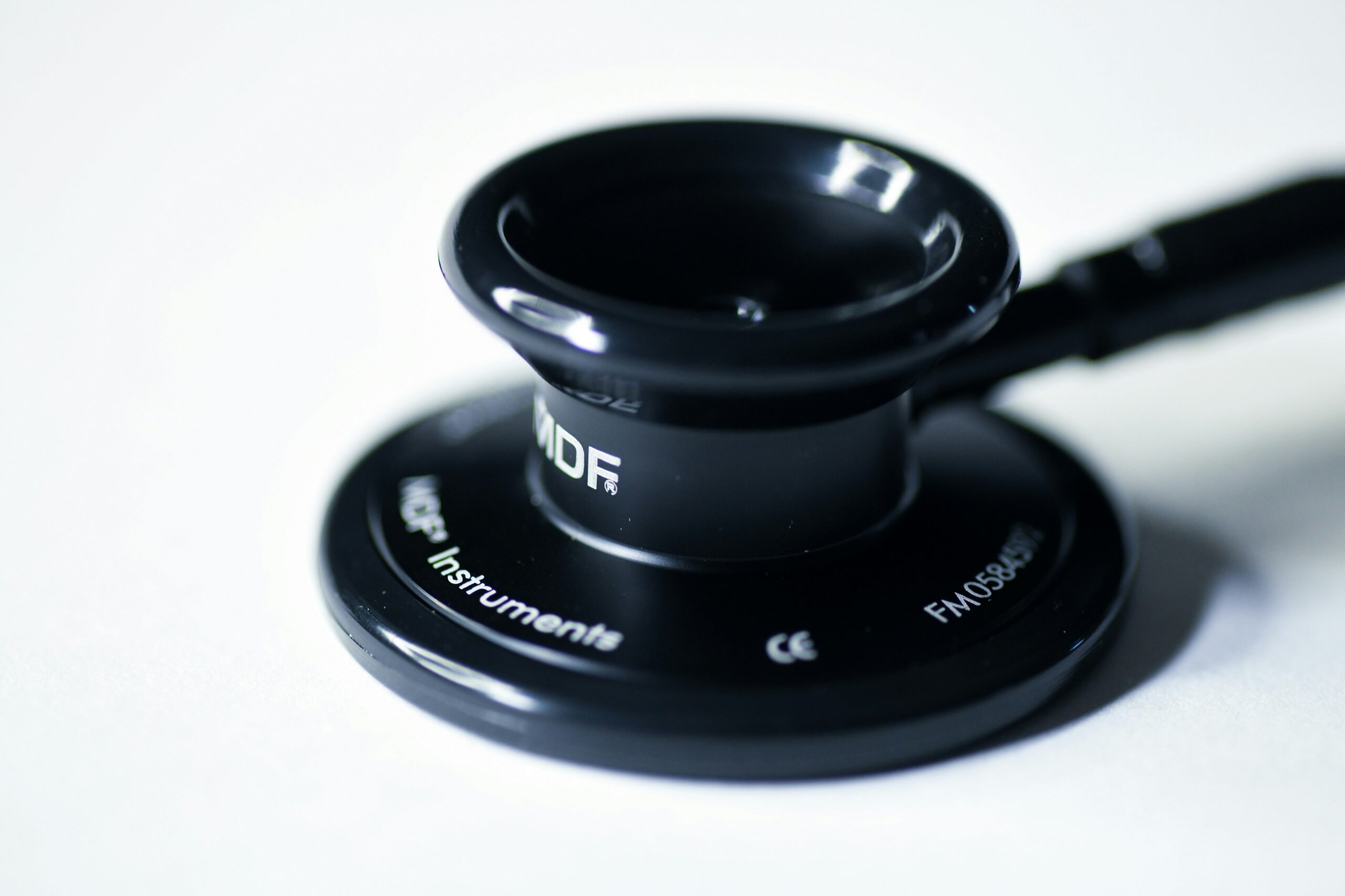Navigating the maze of health insurance premiums and tax deductions can be daunting, but understanding which expenses are deductible can lead to significant tax savings.
Your journey to fiscal fitness might begin at the doctor’s office, but it certainly doesn’t end at the checkout desk.
Knowing the ins and outs of what qualifies as a deductible health expense, from medical insurance deductions to disability insurance premiums, is a powerful tool in managing your finances.
Whether you’re a sole proprietor or part of a larger company, the guidelines for deductible expenses are pivotal to your bottom line.
Read to discover how to claim these benefits and optimize your tax return.
Key Takeaways
- Deductible Health Expenses Primarily Include Payments for Treatments for Disease and Body Functions
- Taxpayers Need to Track Carefully and Document Medical Expenses to Maximize Deductions
- Health Insurance Premiums, Certain Medical Procedures, and Associated Health Services May Qualify as Deductible Expenses
- Staying Informed on Tax Law Changes Ensures Accurate Filing and Maximization of Potential Health Deductions
- Taxpayers Should Consider the Timing of Medical Expenses and the Use of Health Savings Accounts to Enhance Tax Benefits
What Counts as Deductible Health Expenses?

Identifying which health insurance expenses can be claimed as deductions on business taxes is key for savvy taxpayers aiming to maximize their benefits.
It’s essential to grasp the definition of medical expenses as defined by the Internal Revenue Service, as not all costs qualify.
By distinguishing between eligible and non-qualified expenses, individuals can effectively navigate the realm of tax deductions.
Deductible costs can include various health-related expenditures, from doctor visits and surgeries to preventive care and dental insurance.
Consulting a tax advisor or health professional becomes crucial in ensuring compliance and optimizing tax benefits for those unsure about what constitutes a deductible health expense or how to claim it.
Understand the Definition of Medical Expenses
Understanding which medical expenses are tax-deductible hinges on the Internal Revenue Service’s strict guidelines: only certain types of health-related costs fit the bill. These expenses generally include payments for the diagnosis, cure, mitigation, treatment, or prevention of disease, and the costs for treatments affecting any part or function of the body. Taxpayers need to know these rules inside and out to ensure they correctly identify and claim permissible health-related deductions on their tax returns.
- Identify qualifying medical expenses as IRS rules outline, including treatments and preventive healthcare measures.
- Ensure all medical expenses claimed are directly related to diagnosing or treating a health condition or disease.
- Understand that permissible deductions can extend to a broad range of medical services, from surgeries to mental health and dental care.
Distinguishing Between Qualified and Non-Qualified Expenses
When it comes to differentiating deductible from non-deductible health expenses, it’s all about compliance with the Internal Revenue Service’s guidelines. Only the costs directly linked to medical care, such as physician consultations, surgery, or even mental health support, can be considered. In contrast, expenses without a clear health necessity, including over-the-counter drugs without a prescription or purely cosmetic procedures, typically fall outside the deductible category.
Common Examples of Deductible Health Expenses
Consumers navigating the tax landscape may find that health-related costs often occupy a deductible space on their tax return. Consider the insurance premiums paid to a health maintenance organization for coverage, which can become a pivotal factor in lowering one’s taxable income. Similarly, out-of-pocket payments for services not covered by insurance, such as physical therapy or chiropractic sessions, often qualify as deductible health expenses.
- Premiums paid to health insurance companies are often tax-deductible, especially if they exceed a certain percentage of the taxpayer’s adjusted gross income.
- Expenses for medical procedures like surgery or diagnostic services can be included in deductible health costs, provided they are not reimbursed by insurance.
- Other deductible costs may encompass the fees for dental insurance, mental health care, and even certain drug prescriptions.
When to Consult an Expert for Health Expense Deductions
Navigating the complex landscape of tax deductions for health expenses can be challenging: it might be time to consult an expert. An advisor can clarify nuanced tax codes and offer strategies tailored to individual or business scenarios regarding medical insurance premium deductions. This is particularly prudent for self-employed individuals and small business owners who need to grasp the subtleties of deductions, such as those for health insurance premiums.
| Health Expense Category | Examples of Deductible Expenses | Typically Non-Deductible Costs |
|---|---|---|
| Insurance Premiums | Health Insurance, Dental Insurance, Disability Insurance | Life Insurance, Travel Insurance |
| Medical Treatments | Surgery, Physical Therapy, Mental Health Care | Cosmetic Procedures, Non-Prescription Drugs |
| Health-Related Services | Chiropractic Sessions, Physical Examinations | Non-Medical Personal Services |
How to Track and Document Your Deductible Health Expenses

Properly managing healthcare’s financial aspects involves meticulous expense tracking and documentation.
Keeping orderly records for those seeking tax deductions on their health insurance premiums and other medical costs is crucial.
From storing receipts to utilizing dedicated tools, the process ensures accuracy come tax season.
Adequate documentation is a requirement set by the Internal Revenue Service and a smart practice to maximize your medical insurance deduction claims.
Next, we will explore the details of organizing receipts and records, employing health expense tracking tools, and gathering the necessary documentation to substantiate tax deductions.
Keeping Receipts and Records Organized
Maintaining an organized tracking of health-related expenditures is crucial for efficient tax filing. Adhering to a consistent workflow, such as immediately scanning and categorizing receipts and insurance statements, helps prevent last-minute scrambles and ensures taxpayers can easily substantiate their claims. One’s attention to detail in this area can be a cornerstone of successful financial management, especially regarding deductible health expenses.
Using Health Expense Tracking Tools
Incorporating health expense tracking tools streamlines the process for consumers sifting through their records at tax time. Software and mobile apps designed for financial management can automatically categorize medical costs, create summations for tax purposes, and even alert users to potential deductions. These technological assists can transform a once daunting task into a manageable routine, ensuring accuracy and maximizing potential tax savings with minimal stress.
What Documentation You Need for Tax Deductions
Robust documentation is paramount to secure the tax deductions you deserve. Gather all invoices from healthcare providers, summaries of benefits from insurance companies, and receipts for every transaction, from prescriptions to premiums. This recordkeeping defines the foundation for legitimizing your claims with the Internal Revenue Service, ensuring your deductions are recognized and your tax return is accurately calculated.
Maximizing Your Deductible Health Expenses

Unlocking the full potential of deductible health expenses on taxes requires strategic planning and a thorough understanding of various financial tools.
Taxpayers looking to boost their deductible expenses should consider timing major medical treatments to align with fiscal advantages, ensuring they extract the maximum tax benefits possible.
Harnessing the financial levers provided by Health Savings Accounts and Flexible Spending Accounts offers individuals another avenue to expand their eligible health deductions.
These accounts promote smarter budgeting for healthcare costs and facilitate greater tax savings through pre-tax contributions used for qualifying medical expenses.
Strategies to Increase Deductible Expenses Legitimately
One can enhance their tally of deductible health expenses by timing elective procedures to coincide with a fiscal period where they face higher taxes, effectively reducing tax liability. This foresighted approach to scheduling treatments within a year where income peaks or other tax credits are minimal can amplify the impact of deductions. Another legitimate strategy includes enrolling in a high-deductible health plan that qualifies for a Health Savings Account (HSA), allowing pre-tax dollars to fund medical costs, thereby reducing taxable income.
Planning Major Treatments for Tax Benefits
Savvy taxpayers often consider the timing of significant medical procedures to optimize their tax returns. If taxpayers anticipate a year with high net income, they might schedule elective surgeries or costly dental work within that year to leverage the medical expenses as a sizable deduction. This forward-looking approach can lighten tax burdens by aligning out-of-pocket health expenditures with periods of increased tax responsibility.
Utilizing Health Savings Accounts (HSAs) and Flexible Spending Accounts (FSAs)
Embracing the benefits of Health Savings Accounts and Flexible Spending Accounts is a strategic move for those looking to enhance their tax deductions. HSAs and FSAs allow taxpayers to allocate pre-tax dollars for medical expenses, lowering their taxable income and setting aside funds for health care costs. By making the most of these accounts, individuals efficiently manage their healthcare expenditures and tax obligations with foresight and financial acumen.
Eligibility Criteria for Deductible Health Expenses

As individuals scrutinize their health-related expenditures in pursuit of tax relief, understanding the eligibility criteria for deductible health expenses becomes critical.
Whether a sole proprietor examines business-related insurance costs or a household explores deductions for employee benefits, it’s crucial to know who can claim these deductions.
Alongside eligibility, the limitations and thresholds set forth by tax laws clearly dictate how much medical expenses can be leveraged for tax advantages.
This subsection delves into the nuances of who qualifies for health expense deductions and the parameters that determine the deductibility of such expenditures.
Who Can Claim Health Expense Deductions
Determining who can claim health expense deductions on their taxes often centers on the taxpayer’s adjusted gross income and their employment status. Typically, individuals who itemize deductions and have medical expenses that exceed 7.5% of their adjusted gross income may find they are eligible for these deductions. This can include self-employed individuals, those who are part of an S corporation, or anyone else who meets specific criteria set by tax law.
- Self-employed individuals may be eligible to deduct 100% of their health insurance premiums, even if they do not itemize.
- Employees with medical expenses exceeding 7.5% of their adjusted gross income can itemize and claim a deduction.
- Taxpayers with health maintenance organization plans or those who participate in high-deductible plans with health savings accounts may have additional opportunities for deductions.
Limitations and Thresholds for Deductible Expenses
Taxpayers must navigate the limitations and thresholds established by tax law to claim health expense deductions effectively. Medical expenses are deductible only to the extent that they exceed 7.5% of an individual’s adjusted gross income (AGI), underscoring taxpayers’ need to calculate carefully and ensure their expenses cross this essential benchmark. This threshold acts as a gatekeeper, determining which expenses can actually impact one’s tax liability and encouraging meticulous record-keeping of all eligible healthcare costs.
Common Mistakes to Avoid With Deductible Health Expenses

Navigating the world of deductible health expenses can often lead to confusion, and even the most diligent taxpayers can trip up.
Common pitfalls include overestimating the costs that qualify for deductions, overlooking legitimately deductible expenses, and mismarking figures on tax documents.
Being precise in tracking and reporting healthcare expenditures is pivotal because missteps can cause individuals to miss out on valuable tax breaks or attract unwanted attention from the Internal Revenue Service during audits.
Learning to sidestep these errors ensures one maximizes their tax benefits while staying compliant with tax laws.
Overestimating Deductible Expenses
Overestimating deductible expenses is a frequent misstep that taxpayers should be vigilant to avoid, as it may lead to miscalculations on tax returns. Accurately identifying and ascertaining the legitimacy of medical expenditures, such as insurance premiums and direct healthcare costs, requires due diligence to not inflate the true cost. Taxpayers must be keenly aware that only medical expenses exceeding 7.5% of adjusted gross income are considered deductible, emphasizing the need for precision and restraint in their calculations.
Missing Out on Elinot to inflate the true costgible Expenses
Conversely, taxpayers may also underutilize their deductions by overlooking eligible expenses, such as premiums for disability insurance or costs associated with smoking cessation programs. It’s vital for one to review all potential health-related expenditures thoroughly and include them when itemizing so as not to miss out on legitimate tax-saving opportunities. A comprehensive understanding and inclusion of all permissible medical expenses maximizes one’s tax deductions.
Incorrectly Reporting Expenses on Tax Returns
Mistakes in reporting deductible expenses on tax returns can have serious repercussions, leading to penalties or a reduced tax refund. Accurate reporting involves matching claims on Form 1040 Schedule A with supporting documentation, ensuring every expense reported aligns precisely with records. Taxpayers should double-check data entered for medical deductions to prevent costly errors and maintain compliance with Internal Revenue Service regulations.
Changes to Deductible Health Expenses in the Current Year

As the tax landscape evolves, it is crucial for individuals and businesses seeking to maintain tax efficiency to stay informed about changes to deductible health expenses.
Recent tax law shifts may alter how deductions are calculated, directly impacting taxpayers’ bottom lines.
It’s vital to remain current with the latest updates, which detail which medical costs are deemed deductible. This ensures individuals are well-prepared to navigate future adjustments to health expense deductions.
This evolving area of finance demands attentiveness to modify tax strategies appropriately and secure all entitled benefits in the current year.
Recent Tax Law Changes Affecting Deductions
Keeping up with alterations in tax regulations is imperative for taxpayers who are aiming to optimize their health expense deductions. Notable changes, such as those introduced by the Tax Cuts and Jobs Act, could adjust the threshold for deductible medical expenses or tweak the rules for claiming them. Consumers must stay informed and adjust their tax planning strategies in accordance with the new laws to safeguard their financial interests.
Updates to What Expenses Are Considered Deductible
With each tax season, updates and changes can shift which health expenses are considered deductible. Keeping abreast of these modifications ensures taxpayers don’t miss out on new chances to lower their tax liability: The Internal Revenue Service regularly reviews and updates the classification of deductible expenses to adapt to evolving healthcare standards and financial policies.
- You can review IRS announcements or consult with a tax expert to identify any new additions to the list of deductible health expenses.
- Check whether there have been any adjustments to the rules regarding the deductibility of long-standing health-related costs.
- Incorporate these updates into one’s tax filing to guarantee accuracy and a maximized tax return.
Preparing for Future Changes to Health Expense Deductions
Staying proactive is key in tax preparation, especially with potential alterations in deductible health expenses. Taxpayers benefit by regularly assessing their healthcare spending and saving pertinent documents so they are ready to incorporate any changes into their filing process:
| Year | Actions for Preparation | Benefit of Action |
|---|---|---|
| Current Year | Maintain meticulous records of all health expenses. | Ensures readiness for tax changes and maximizes potential deductions. |
| The following Year | Stay informed on tax law changes related to health deductions. | Aligns tax strategies with the latest regulations to optimize returns. |
Conclusion
Understanding deductible health expenses is pivotal for individuals looking to lessen their tax burden by accurately identifying and claiming eligible medical costs.
Maintaining orderly records and employing tracking tools ensures taxpayers can easily substantiate their deductible expenses.
By staying informed about recent tax law changes, one can adeptly incorporate new deductible opportunities into their tax planning strategies.
Ultimately, grasping the complexities of deductible health expenses empowers taxpayers to maximize their financial health and optimize their tax returns.

